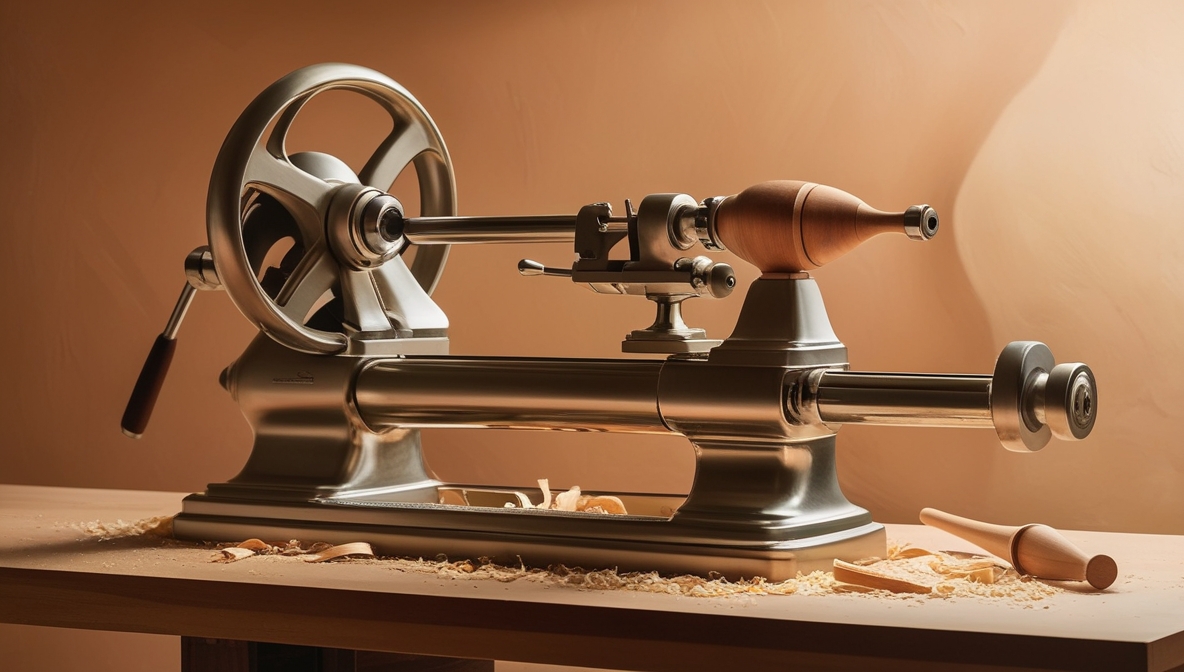Woodworking enthusiasts often rely on the wood lathe to transform ordinary pieces of wood into stunning creations. This versatile tool allows users to shape, carve, and polish wood into bowls, spindles, furniture legs, and more. Understanding how to use a wood lathe and its accessories is essential for creating high-quality projects.
Read about Wood Router here!
What is a Wood Lathe?
A wood lathe is a machine designed to rotate a piece of wood while you shape it with various wood turning tools. It is an indispensable tool in the art of wood turning, which involves crafting symmetrical and smooth objects such as vases, pens, and decorative items.
Types of Wood Lathes
- Jet Wood Lathe
Known for its reliability and durability, the jet wood lathe is a favorite among professionals. It is perfect for large-scale projects and offers advanced features like variable speed control and stability. - Mini Wood Lathe
Ideal for hobbyists or those with limited workspace, a mini wood lathe is compact yet powerful. It is great for small projects like pen turning or jewelry making. - Midi Wood Lathe
Bridging the gap between mini and full-sized lathes, the midi wood lathe offers versatility for medium-sized projects.
Essential Wood Turning Tools
To make the most of your wood lathe, you need the right tools. Here are some common wood lathe tools used in wood turning:
- Roughing Gouge
Removes excess material and shapes the wood into a cylindrical form. - Spindle Gouge
Used for detailed shaping and creating curves. - Parting Tool
Helps in making precise cuts or separating finished pieces from the workpiece. - Scraper
Smoothens surfaces and refines shapes. - Chisel Set
Includes a variety of chisels for intricate detailing and finishing touches.
Investing in high-quality wood turning tools is essential for achieving professional results.
How to Use a Wood Lathe
Using a wood lathe may seem intimidating at first, but following a few basic steps can make the process straightforward and enjoyable:
- Prepare the Wood
Select a piece of wood appropriate for your project. Ensure it is properly dried and free of cracks. - Secure the Workpiece
Mount the wood on the lathe using a faceplate or a chuck, depending on your project type. - Choose the Right Tool
Select the appropriate wood turning tools based on the shaping or detailing needed. - Adjust the Speed
Set the lathe to a speed suitable for your project. Lower speeds are ideal for rough shaping, while higher speeds are better for finishing. - Start Turning
Begin by using the roughing gouge to shape the wood, then switch to other tools for detailing and finishing. - Sand and Finish
Once the turning is complete, sand the wood to a smooth finish and apply a protective coating or polish for a professional look.
Benefits of Using a Wood Lathe
A wood lathe offers numerous advantages for woodworking projects:
- Versatility: Create a wide range of items, from furniture parts to decorative pieces.
- Precision: Achieve symmetrical and smooth shapes with ease.
- Creativity: Experiment with designs, patterns, and textures.
- Efficiency: Save time compared to manual carving.
Whether you’re using a jet wood lathe for large-scale projects or a mini wood lathe for small, intricate tasks, this tool can elevate your woodworking game.
Choosing the Right Wood Lathe
Selecting the right wood lathe depends on your project needs and skill level:
- For Beginners
A mini wood lathe is ideal for small projects and learning basic techniques. - For Intermediate Users
A midi wood lathe offers more power and versatility, making it suitable for medium-sized projects. - For Professionals
The jet wood lathe or other full-sized models provide advanced features for large-scale or detailed work.
Tips for Successful Wood Turning
- Keep Tools Sharp
Dull tools can damage the wood and make the process more difficult. Regularly sharpen your wood turning tools for clean cuts. - Practice Safety
Always wear safety goggles, use a dust mask, and keep loose clothing away from the lathe. - Work with Quality Wood
Using high-quality wood ensures better results and reduces the risk of splitting or cracking. - Experiment with Speeds
Adjusting the speed of the lathe can help you achieve different effects and finishes. - Learn from Experts
Watch tutorials or attend workshops to refine your skills and learn new techniques.
Exploring Advanced Wood Turning
Once you’re comfortable with the basics, you can explore advanced techniques like segmented turning, hollow forms, or combining wood with other materials for unique designs. A jet wood lathe or similar high-end model is ideal for tackling such projects.
Conclusion
A wood lathe is a valuable tool for anyone passionate about woodworking. By using the right wood turning tools and practicing proper techniques, you can transform raw wood into beautiful, functional creations. Embrace the art of wood turning and bring your woodworking projects to life.
